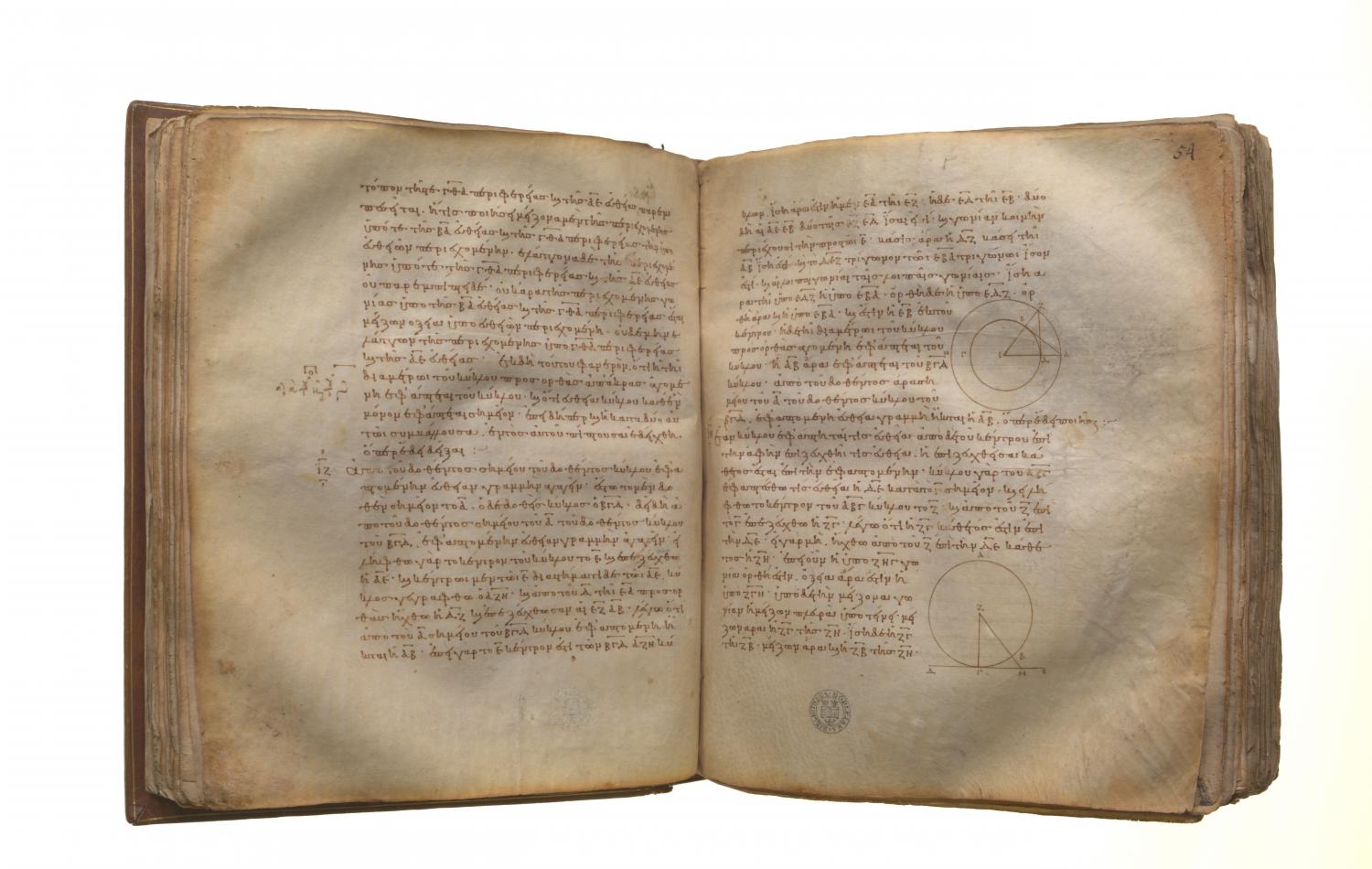Circles: Book 3 Proposition 16
Translations
The straight line drawn at right angles to the diameter of a circle from its extremity will fall outside the circle, and into the space between the straight line and the circumference another straight line cannot be interposed; further the angle of the semicircle is greater, and the remaining angle less, than any acute rectilineal angle. Let ABC be a circle about D as centre and AB as diameter; I say that the straight line drawn from A at right angles to AB from its extremity will fall outside the circle. For suppose it does not, but, if possible, let it fall within as CA, and let DC be joined. Since DA is equal to DC, the angle DAC is also equal to the angle ACD. [I. 5] But the angle DAC is right; therefore the angle ACD is also right: thus, in the triangle ACD, the two angles DAC, ACD are equal to two right angles: which is impossible. [I. 17] Therefore the straight line drawn from the point A at right angles to BA will not fall within the circle. Similarly we can prove that neither will it fall on the circumference; therefore it will fall outside. Let it fall as AE; I say next that into the space between the straight line AE and the circumference CHA another straight line cannot be interposed. For, if possible, let another straight line be so interposed, as FA, and let DG be drawn from the point D perpendicular to FA. Then, since the angle AGD is right, and the angle DAG is less than a right angle, AD is greater than DG. [I. 19] But DA is equal to DH; therefore DH is greater than DG, the less than the greater: which is impossible. Therefore another straight line cannot be interposed into the space between the straight line and the circumference. I say further that the angle of the semicircle contained by the straight line BA and the circumference CHA is greater than any acute rectilineal angle, and the remaining angle contained by the circumference CHA and the straight line AE is less than any acute rectilineal angle. For, if there is any rectilineal angle greater than the angle contained by the straight line BA and the circumference CHA, and any rectilineal angle less than the angle contained by the circumference CHA and the straight line AE, then into the space between the circumference and the straight line AE a straight line will be interposed such as will make an angle contained by straight lines which is greater than the angle contained by the straight line BA and the circumference CHA, and another angle contained by straight lines which is less than the angle contained by the circumference CHA and the straight line AE. But such a straight line cannot be interposed; therefore there will not be any acute angle contained by straight lines which is greater than the angle contained by the straight line BA and the circumference CHA, nor yet any acute angle contained by straight lines which is less than the angle contained by the circumference CHA and the straight line AE.Porism. From this it is manifest that the straight line drawn at right angles to the diameter of a circle from its extremity touches the circle.
